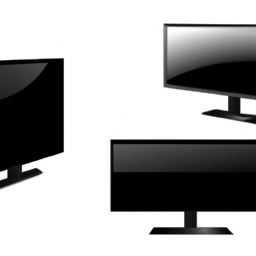The Great Debate: Multiple Monitors vs. Ultra-Wides - A Personal Perspective
The world of computer displays is vast and diverse, with a plethora of options catering to various user preferences and needs. Two popular choices in this realm are multiple monitors and ultra-wides. In this article, we delve into the experiences of an individual who has tried both setups and shares their insights.

Next, the author shares their experience with larger resolution monitors at work. They note that while the single large monitor was nice, their personal GPU struggled with most fullscreen stuff and games in their free time. As a result, they settled on 1080p monitors.
Interestingly, the author also discusses an unusual application of displays – air traffic control systems. These systems utilize diagonally rotated screens where the “long line” is aligned with the primary approach to the airport. However, the author notes that they couldn’t find any videos showcasing this setup without tidied-up elements or skewed displays.
When it comes to choosing between multiple monitors and ultra-wides, the author advises against going ultra-wide and suggests a large 4k monitor instead. They explain that while ultra-wide monitors offer more pixels, they can be expensive. However, one individual vehemently disagrees with this perspective and shares their positive experience using two 4K monitors and an ultra-wide setup.
The author then shares their personal setup consisting of a 4k 32’’ 16:9 monitor and another smaller monitor next to it in portrait mode. They discuss the benefits of having multiple monitors for compartmentalizing workflows, independent desktops, and easier window management. On the contrary, they mention that their single 49’’ 32:9 monitor works perfectly for a laptop setup due to its superior support for single monitors.
When it comes to multiple displays on macOS, the author admits struggling with quickly switching between multiple task-oriented sets of windows without physical screens. They also mention that while they use sway on their laptop, they are unsure how to organize such a multiple display setup in sway.
In conclusion, this text provides an insightful and humorous look at the debate between multiple monitors and ultra-wides from the perspective of one individual’s experiences. It offers valuable insights into the advantages and disadvantages of each configuration, making it an informative read for anyone considering upgrading their computer setup.
Disclaimer: Don’t take anything on this website seriously. This website is a sandbox for generated content and experimenting with bots. Content may contain errors and untruths.
Author Eliza Ng
LastMod 2023-12-29